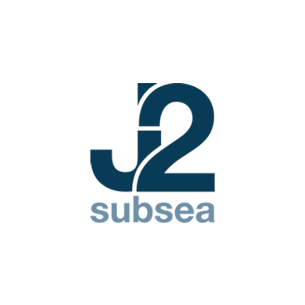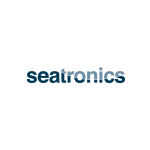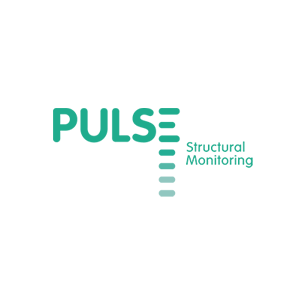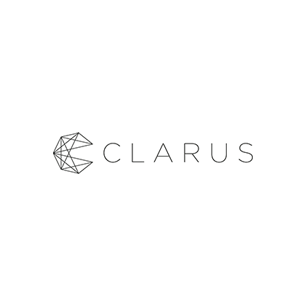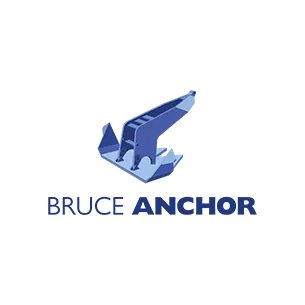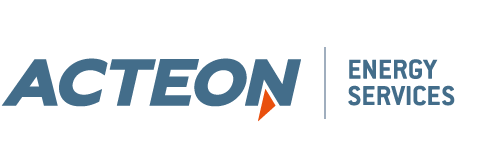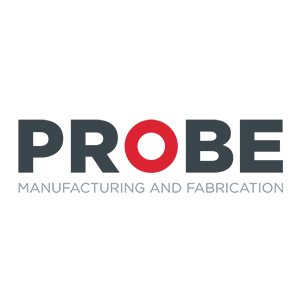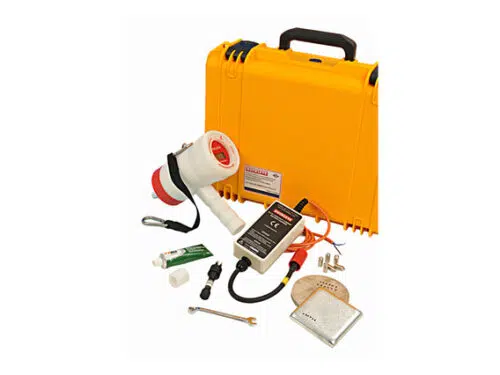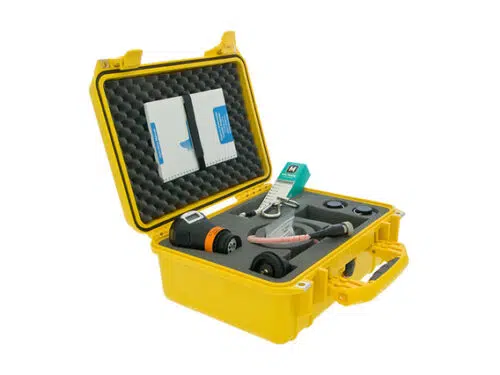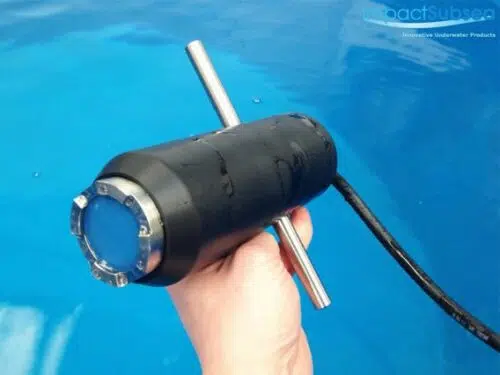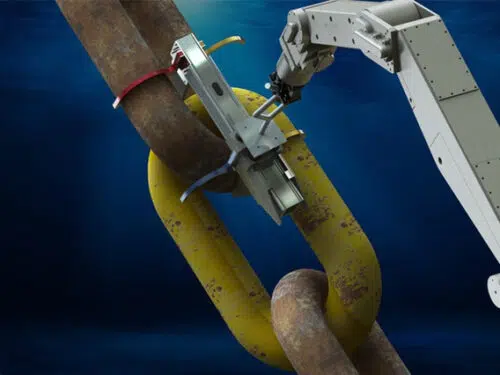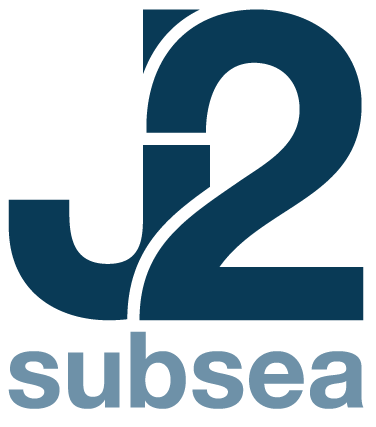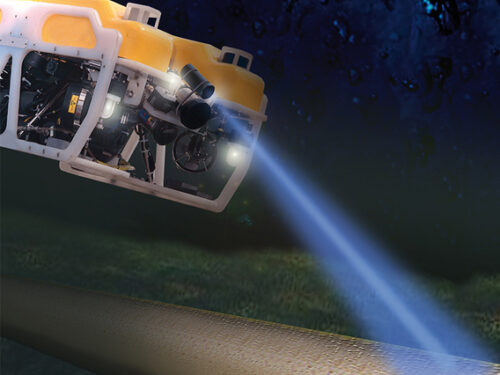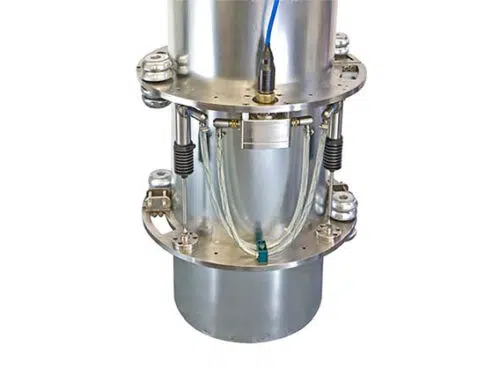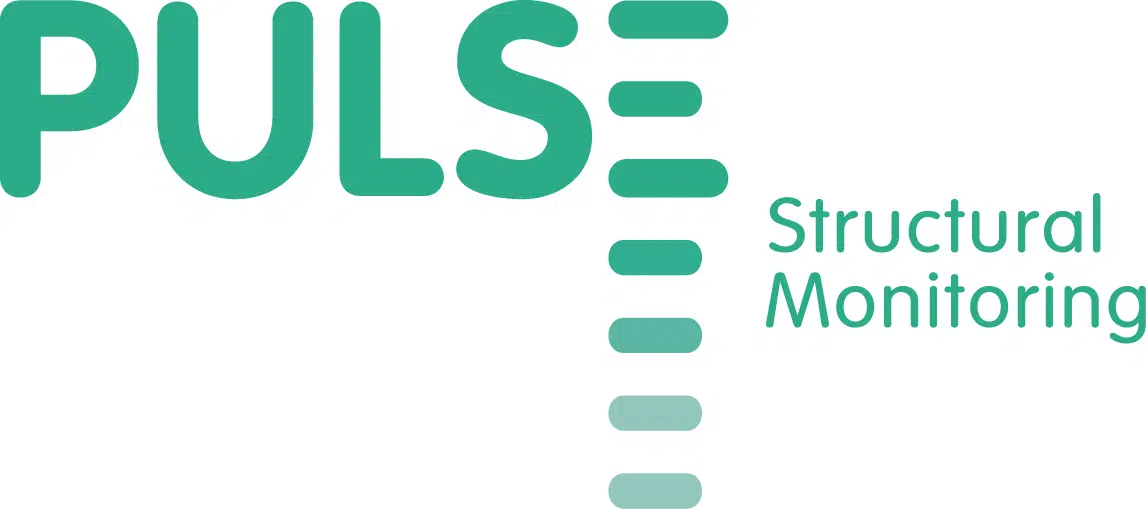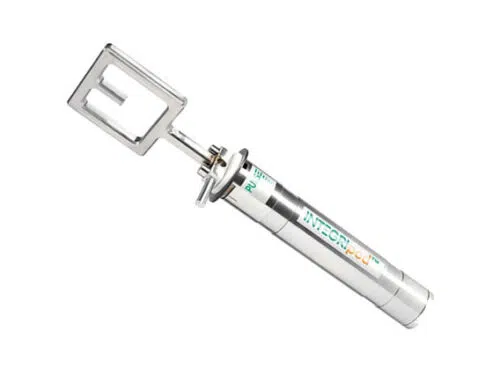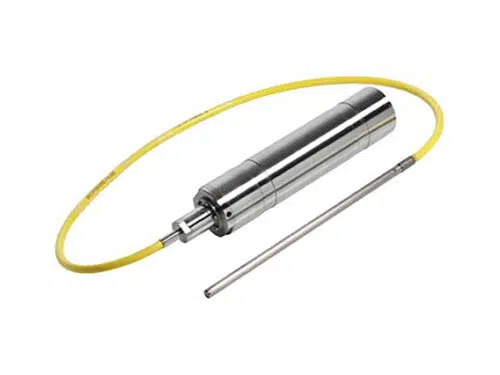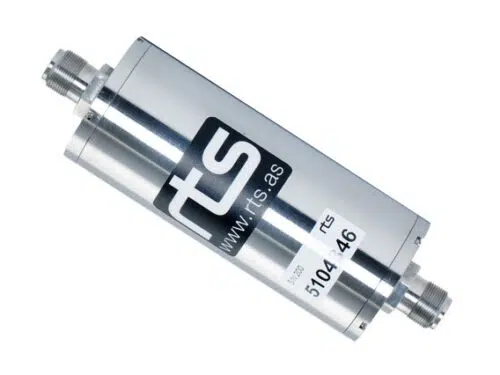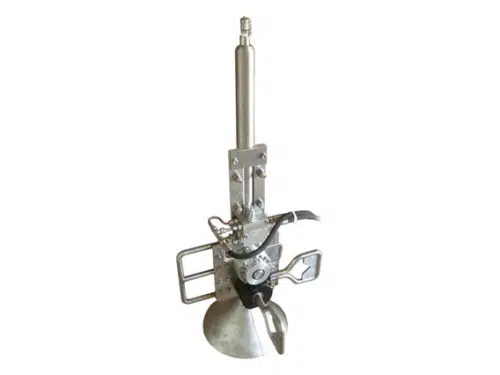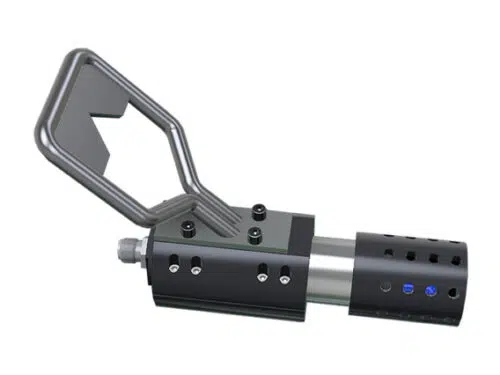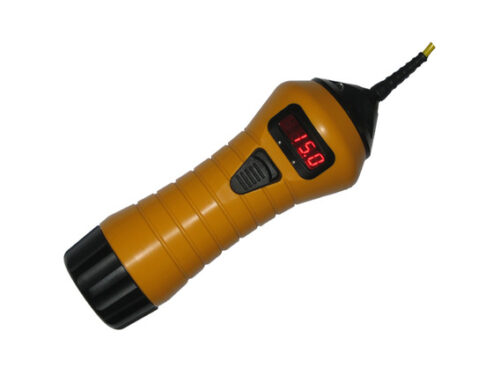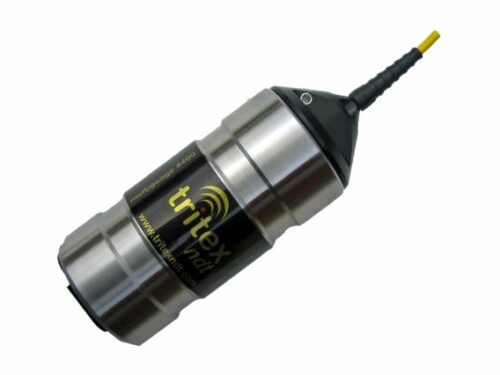NDT Inspection
Return to Diving & NDTSearch products
X Products selected
The Bathycorrometer® is a well-proven inspection tool for measuring the levels of corrosion on sub-sea structures. Light and easy to use, this hand-held unit enables divers to obtain accurate readings of the corrosion potential levels of structures at the point of contact.
The first Bathycorrometer® unit went into rigorous North Sea service in 1971. Customer satisfaction with the performance of Bathycorrometers® has led to specified use, worldwide. The current model retains the features of the original Roxby unit but with the addition of modern electronics. It can also be connected to a Surface Display Unit (SDU), which provides a top-side verification of readings.
Bathycorrometers® are used for polarisation, corrosion and interaction surveys, in particular as part of the commissioning check or inspection of production and drilling platforms; sub-sea pipelines; ships’ hulls; jetties and other marine works.
Standard Kit (Ref: H1) comprises:
Buckleys Bathycorrometer, battery charger, 6 x hardened stainless steel probe tips, Probe tip spanner, Silicone grease, Zinc and Magnesium test blocks and comprehensive instruction manual, all contained in fitted carrying case.
- Illuminated digital display
- Facility for adding remote monitoring
- Single handed and light
- Simple to use and maintain
- Robust and inert housing
- Suitable for use in deep water – up to 350 metres
- Easily replaceable half cell
- Supplied with calibration certificate
- Kit includes Zinc and Magnesium test blocks
The Cygnus Underwater is the original diver held subsea multiple echo Ultrasonic Thickness Gauge. It was designed for use by divers undertaking subsea maintenance and surveys 3 decades ago… and today it is still the industry standard.
The unit is depth rated to 300 metres and it provides an accurate metal thickness measurement through coatings up to 20mm thick. The bright LED display ensures easy viewing even in poor visibility conditions.
The Underwater Thickness Gauge is supplied ready to use as a complete kit with 2 rechargeable batteries in a protective carry case.
- Auto – Probe Recognition (APR)
- “Deep-Coat” mode for measuring through coatings up to 20 mm thick
- Easy calibration using convenient buttons
- Rugged, durable, shock-proof construction
- Stable calibration – linear accuracy – no zero adjustment
- Large bright LED display for poor visibility
- Pressure rated to 300 m depth
- Heavy duty sealed unit with double ‘O’ ring protection
- Remote probe with 0.9 m lead for measuring in awkward locations
- Self verification of measurements to ensure accuracy
- Echo strength indicator to aid measurement
- All probes are protected by a membrane to prevent damage
- Various probe options
- Two rechargeable battery packs with charger
- Fixed head probe option for single handed use
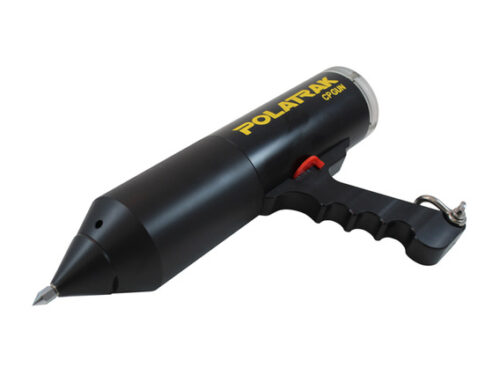
The CP Gun is the most user-friendly diver-held cathodic-protection probe on the market. The CP Gun outperforms all other available bathycorrometer-type devices in accuracy and convenience. Longer battery life, interchangeable freshwater / seawater electrodes and ultra-bright LED displays (for limited-visibility conditions) make the CP Gun the most user-friendly diver-held CP probe.
A single set of disposable alkaline batteries provides up to 150 hours of continuous survey operation. A convenient on-off switch allows display only when actually probing for even longer life. The CP Gun is rated to depths of up to 300 m (~1000 ft).The CP Gun is designed for situations where a few contact CP readings are required. The unit, like all Polatrak probes, has twin elements and dual readouts. This provides an unparalleled level of accuracy and redundancy.
- Twin Ag/AgCl Electrodes
- Contact Probe (Bathycorrometer Style)
- Replaceable Electrodes
- Rated to 1000 fsw (305 m)
- Integral Voltage Readout
- Diver Held
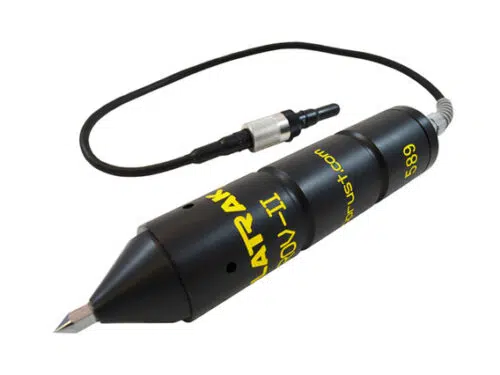
The Deepwater Polatrak ROV II is the world’s best-selling, general-purpose, tip-contact cathodic-protection probe. The first CP probe manufactured with twin elements, it allows on-line calibration that eliminates time-consuming on-site procedures and greatly reduces user error.
The ROV II probe interfaces easily with the ROV, but can also be held by divers. It serves as either a tip-contact or proximity-style probe. If ROV operators prefer to avoid connection with the umbilical, the ROV II probe can be connected directly to Deepwater’s Deep C Meter readout to make the survey system completely self-contained. The CP potentials are displayed directly on a subsea readout viewable with the ROV’s video camera. Like all Polatrak corrosion probes, the ROV II is fully field-serviceable, with plug-in electrode elements and interchangeable components. No battery is required.
- Twin Ag/AgCl Electrodes
- Proximity or Contact Probe
- Rated to 10,000 fsw (3050 m)
- Diver Held or ROV interfaced
The ISFMD system provides the latest in underwater ultrasonic Flooded Member Detection technology. Suitable for Diver or ROV deployment the ISFMD system provides the most advanced and reliable Flooded Member Detection system available today.
Utilising an ultrasonic probe with a broadband composite transducer together with an advanced digital ultrasonic engine ensures the highest level of accuracy and reliability in readings.
The ISFMD system does not use gamma ray or any other radio active sources. The system is based entirely on the use of ultrasonics. This removes the logistical and health and safety difficulties associated with gamma ray based flooded member detection systems.
An optional ISD4000 depth sensor can be added to the system to automatically record depth of each check point.
All readings are shown visually in the seaView software package. Upon completion of the survey, a full report is automatically generated with readings and user notes.
- Ultrasonic FMD System
- Visualise Acoustic Returns
- Automatic Report Generation
- Powerful & Intuitive Software
- ROV or Diver Operated
- Probe Orientation Sensor
- Titanium Probe
FlexiCAL is an ROV mounted caliper that allows for direct measurements from point to point with instantaneous readout.
Accurate live measurements give the client the knowledge to make decisions regarding their assets as the measurements are taken. No more post processing!
Results are accurate to ±0.1 mm and highly repeatable. The standard measurement range is 0-550mm, but the caliper can be equipped with extenders and blades tailored to suit the customer need.
The caliper is frequently used for measuring wear and corrosion on mooring chain, but also performs excellently on flanges, plates, structures and any number of other subsea assets.
- Delivers accurate, repeatable, real-time measurements
- Adaptable blades enable measurement of complex geometry
- Results are instantaneous and repeatable to +/- 0.1mm
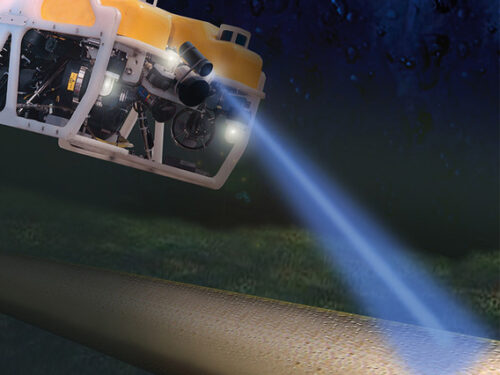
The Neptune Oceanographics’ acoustic pipeline leak detection system (APLD) detects leaks from risers, pipelines, flanges, sub-sea control systems etc. with confidence using acoustic techniques. The APLD uses directional hydrophones to listen for ‘ultra-sounds’ generated by fluid leaking under pressure from a pipeline into the sea.
The APLD allows rapid detection and location of leaks by scanning the suspect area. The system can be deployed using an ROV, AUV, towed vehicle or can be diver held. Software rejection of ultrasounds at frequencies below 30kHz enables automatic filtering of most of the acoustic noise generated by the ROV or attendant vessel. The two channel system allows one of more sensor types (fluorometer, acoustic and temperature) to be operated simultaneously for more efficient detection
The sensors are connected to a processor board that is mounted within a pressure housing mounted on the ROV . The processor produces data in RS232 and RS485 (operator selectable) format for transmission to the surface via the ROV umbilical. Power is supplied by the ROV (12 to 30vdc). For diver operations, the sensor connects to the surface PC via a diver to surface cable and a pressure housed RS485 signal converter.
The on-board PC displays data as 2 channel colour time series plots in real time allowing the operator to easily see changes in signal that indicate the presence of a leak. The software also allows the user to set an alarm level just above mean background that will provide an immediate visual and audible response in the event of a leak signal.
The sensor can be integrated with Neptune Oceanographics’ fluorescent leak detectors (FPLD) allowing both systems to be operated simultaneously through a common RS232/485 interface to the ROV. Both the APLD and the FPLD data are displayed on the same screen simultaneously.
- Hydrophone may be diver held, mounted on ROV, AUV, towed from a vessel, integrated with sidescan sonar fish, or attached to other survey equipment.
- The directional hydrophones allow the operator to ‘home in’ to a leak thus enabling the system to determine the location of a problem.
- The system is easily mobilised for offshore operations
- Data logging for later playback
- Processed data displayed on screen in real time
- Operating depth to 2,000m
- Can be integrated with Neptune Oceanographics’ fluorometric leak detectors (FPLD) allowing both systems to be operated simultaneously through a common RS232 interface to the ROV or RS485 via a separate cable for diver operations. Both the APLD and the FPLD data can be displayed on the same screen simultaneously.
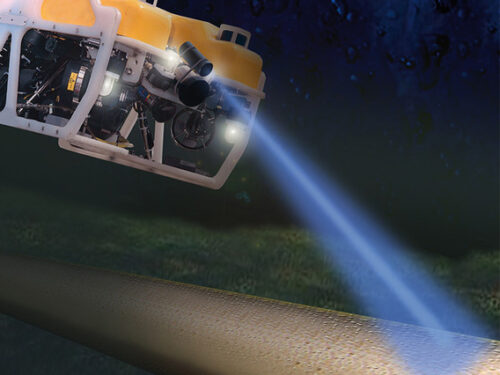
For installations such as water injection flow lines, leaks can be identified using the temperature difference between the surrounding seawater and any water leaking from the flowline.
Neptune has developed a differential temperature measurement technique that can detect very small temperature changes. The sensors comprise fast, high precision thermistors connected through the Neptune leak detection system to the ROV umbilical for onboard display and recording.
The temperature probes are designed for use with the 2 channel leak detection system and can be used simultaneously with a fluorometer or acoustic sensor connected to the second channel. Data are displayed graphically and recorded on the onboard PC.
The probes use the loggers gain control line to switch between two modes:
1. Direct temperature
2. Temperature gradient
Direct Temperature
In the direct mode the sensor will output the temperature in degrees Celsius. The valid temperature range is between -2ºC and 50ºC.
Temperature Gradient
The temperature gradient mode detects rate of change of temperature, therefore a rapid change of temperature will show up as either a positive or negative peak in the data.
- Operating depth 2000m
- Calibrated temperature range -2ºC to 50ºC
- Accuracy ±1ºC
- Temperature Gradient range ±2deg/second
- Supply Voltage 12 – 36 vdc
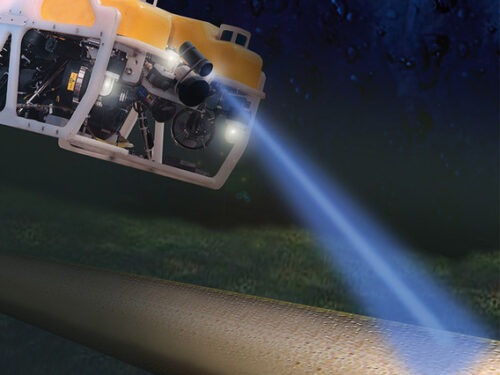
A fluorescence leak detection system. Following on from the very successful MKI and MKII versions of the ‘Long Ranger’ family of subsea leak detection systems, Neptune have introduced their latest MKIII version. As with the earlier versions, the MKIII can detect fluorescent dyes, crude oils, lubricating oils and hydrocarbon based control fluids at depths down to 3000m (6000m as special) but with enhanced performance.
The new MKIII sensors can be supplied for detecting:- Fluorescein, Roemex red dyes, Rhodamine, Castrol UV dyes, Champion Clear dye, McDermid fluids, Pelagic fluids, crude oil, lubricating oil, hydrocarbon based control fluids and others at distances of up to 10 meters or more. The sensors do not have to pass through the leaked fluid plume to detect, i.e., the sensors detect remotely and thus tidal flow direction in relation to the sensors position is not relevant. Other advantages include riser inspection at a safe working distance and the ability to detect leaks within structures and manifolds where ROV access is not possible.
The SNIFFIT and the MKIII Long Ranger can be used together to detect both oil and gas hydrocarbon leaks.
- ROV, AUV mounted or diver held
- Fluorescence Leak Detection System
- Quick and easy remote leak detection from distances up to 10m
- Easily finds leaks in confined spaces where ROV access is not possible
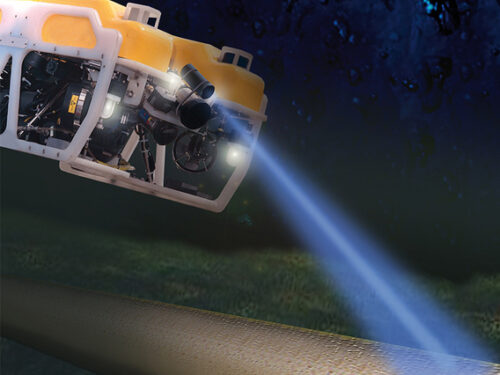
Neptune Oceanographics’ unique SNIFFIT system for the detection of subsea leaks of hydrocarbons is a proven, real time, in situ method that has been used world-wide and has many applications in diverse underwater markets. The small, lightweight detector combines with its control unit and Windows based software to warn the user of the presence of Hydrocarbons (as oil including crude) and Methane ahead of the more obvious physical clues such as the presence of bubbles.
SNIFFIT significantly simplifies current leak detection techniques in that it eliminates the use of dyes and fluorescence detectors and therefore is environmentally and financially superior.
The Sniffit was developed specifically to allow fast, real time in situ detection of dissolved and gaseous methane in water, whatever the source, and has been successful in hydrocarbon surveys to depths of over 3000m worldwide. Although it is essentially a methane detector it is equally a hydrocarbon detector and will respond well to all hydrocarbons including oil.
The very high sensitivity of Sniffit makes it ideal for the detection of hydrocarbons leaking from the seabed or pipeline installations. The sensor can be used as a quick pass for general ‘look and see’ surveys or used in detail mode to detect the exact location of a subsea leak.
The Sniffit is easily mounted on a ROV, AUV, towed vehicle, cable profiler or can be diver held.
The SNIFFIT and the MKIII Long Ranger can be used together to detect both oil and gas hydrocarbon leaks.
- Depth: 0 – 2000 m
- Temperature: 2 – 20 °C nominal
- Methane: 50 nmol/l – 10 Amol/l
- Power: 24-36 VDC – current upon switch-on (at 24 V) – 400 mA normal current consumption (at 24 V) – 100 mA
- Weight in air: approx 1.5 kg
- Sensor output: Normally RS 485 but versions are available with analogue output or parallel RS 235.
- Mounting: ROV – two wire signal conductors through umbilical for RS 485 transmission
For detection of subsea methane leakage, Neptune’s SNIFFIT is deployed. Fluorescence is not possible for detection of methane in water.
The SNIFFIT can detect methane leakage in water and display the data in real time. It is primarily a methane detector but will detect all gaseous hydrocarbons. A new version of the Hydrocarbon Detector has recently been developed that will detect mono ethylene glycol (MEG).
SNIFFIT is a unique, real-time system for gaseous hydrocarbon detection in water. In the offshore oil and gas environment, SNIFFIT is an essential tool for detection of gaseous leaks from pipelines and other subsea installations. The simple to operate system is designed for easy fitting aboard ROVs, AUVs and other underwater vehicles. Measurements are made directly by the SNIFFIT system and results are displayed in real-time via the user-friendly software package.
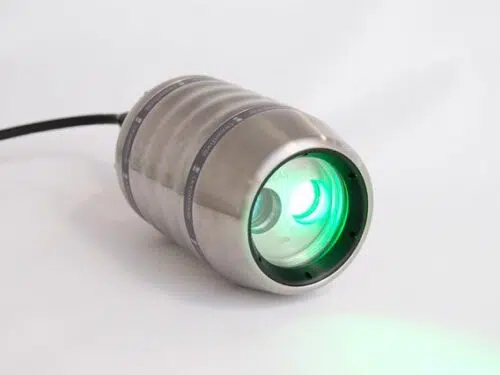
Advanced subsea dye detection system. The ROV mounted D7 DyeTector may be used to detect leaks from subsea infrastructure such as manifolds, wellheads or pipelines if a suitable dye has been added to the infrastructure fluids, or during casing cementing operations to detect cement returns.
High intensity LED light is focused through lenses and filters to create a concentrated beam that is tuned to a specific wavelength to cause maximum molecular agitation and fluorescence of the dye. A sophisticated optical multiplier employs light amplification technology to detect even the smallest amounts of fluorescence from the agitated dye molecules. Advanced detection electronics convert the measurements to digital data.
The powerful D7 DyeTector uses technology capable of detecting single photons of light. It can detect down to single digit parts per billion of dye dissolved in water and is approximately one hundred times more sensitive than the human eye. This makes it ideal for detecting the very smallest of leaks or traces of dye dosed cement.
Detection can be carried out at a safe working distance, and the ROV’s lights do not have to be turned off when the DyeTector is in operation.
- ROV mounted D7, with diver held D9 in development
- Rhodamine, Fluorescein or Ultraviolet dye detection
- Focused beam and filtered high intensity LEDs
- Light amplification and photon detection technology
- 6000m depth rating as standard
The INTEGRIcollar is a strain sensor for measuring axial and bending stresses of a pipe structures. It uses the proven and robust displacement sensor technology widely used in the industries. The typical application for includes riser air can up-thrust tension measurement, drilling riser tension measurement and tendon tension measurement.
System configuration
The device is attached to the pipe with two rigid collars that are securely installed around the pipe. Four linear displacement sensors are installed between the collars, allowing the pipe axial strain to be measured. The sensors require tiny force to operate, hence they will not impose heavy load to the collars.
The INTEGRIcollar can be interfaced permanently to the Pulse standard data logging pods for standalone or online recording operations. The device may be also connected to an ROV retrievable using a wet mate ROV connection allowing the logger data to be removed and replaced whilst leaving the INTEGRIcollar connected to the structure. The device relies on the high accuracy, stability and robustness of the non-contact displacement sensors, which are extensively qualified in marine applications. The sensors are hermitically sealed in corrosion resistant alloy materials and are rated to 3000 meters underwater. The robust design coupled with pressure-balanced oil-filling technologies ensures that the can reliably operate for many years without intervention.
Mounting methods
The two halves of the collars of the can be clamped to the riser to anchor themselves to the structure pipe securely. The collars are made from corrosion resistant steel with cathodic protection or coating. The displacement sensor modules are fitted between the two collars. The collars may be also welded to the structure if it is allowed. Forged flanges or bossed collars may also be used if it is preferred. The data logger pods are mounted on the riser using diver or ROV installable brackets.
The INTEGRIpod is a motion sensor with integrated data logger for measuring the movement of subsea structures.
Deployment of loggers
The INTEGRIpod contains all electronics, batteries and sensors enclosed in a pressure rated and corrosion resistant casing. They can be deployed by diver or ROV.
The INTEGRIpod can be set up to communicate in the following ways:
- Standalone – to save data on to on-board memory for later retrieval to achieve off-line monitoring
- Acoustic – to transmit data using a through water acoustic link to achieve real-time monitoring
- Hardwired – to transmit data via umbilical to achieve real-time monitoring
System configuration
A wide range of configurations of the INTEGRIpod are available to meet specific requirements. However, there are a number of standard off-shelf configurations optimised to meet common applications. Typical applications for the INTEGRIpod™ include:
- Vibration monitoring for risers, pipelines and subsea jumpers (VIV and flow-induced vibration)
- Motion monitoring of subsea structures during installation
- Inclination measurement of drilling riser and SCRs
- Motion and tension monitoring of mooring lines
The Pulse INTEGRIstick is a unique patented sensor specifically suited for riser fatigue monitoring where response is dynamic bending dominated. Typical applications include fatigue monitoring in the touch down section of an SCR and the taper joint of a top tensioned riser.
The stick sensor is 19 mm diameter and 500 mm in length and it is attached to the outside surface of a riser. It changes in sympathy with the riser pipe and measures the change in riser curvature in 2 planes allowing local dynamic bending stress to be determined and hence the fatigue damage rate to be calculated.
The INTEGRIstick™ has high accuracy, typically allowing 1 micro-strain resolution (depending on riser pipe diameter). This makes the sensor sensitive enough to capture lowest seastates. This capability is essential for measuring response under day to day current profiles and waves that contribute significantly to damage accumulation.
Uniquely the INTEGRIstick™ is sealed, oil-filled and pressure balanced allowing application at depths up to 3000m. It is manufactured from corrosion resistant materials.
System configuration
The sensor has ultra low power consumption and designed to interface directly to the INTEGRIpod™ for battery-powered standalone or online data logging. The connection between the INTEGRIstick™ and INTEGRIpod™ can be a permanent flange connection, a dry-mate connector or an ROV connector. The connection type will depend on the project specification. The ROV retrievable INTEGRIpod™ using a ROV connector allows the INTEGRIpod™ to be removed and replaced whilst leaving the stick mounted on the riser.
Mounting method
The strain measurement system is compact, ultra lightweight and can be fitted to the riser in a matter of minutes. When fitted with a compact GRP fairing the arrangement provides a highly reliable and robust method for measuring riser bending stresses.
The latest RTS CP System is the complete solution for Cathodic Protection Measurements. The system comprises of a single contact probe with dual electrodes, a subsea CP A/D converter bottle and surface display & logging software.
Online quality control function utilises the differential reading between the two electrodes and activates a built-in software alarm when the electrode is seen to be out of calibration. The dual electrode display software presents real-time online CP readings and has the facility to program the differential alarm and scaling limits.
Easy ROV interface, requiring only one RS232 or 422/485 compatible up link and 24V DC power supply. The surface software can be utilised as a standalone display & logging package or easily interfaced to existing video overlay and logging software systems.
- Easy to implement and use
- Dual Electrode plot for QC
- High Accuracy and Resolution
- Online differential measurement
- Digital link no cable loss
- Display & Logging Software
- Fast 10Hz Sampling Rate
- RS232 and RS485/422 Compatible
The Specialist Offshore Services gas sampling unit combines several safety features to allow users to operate with unknown gases. The sample bottle is rated to 5000 PSI, which allows users to bring samples back from depths as great as 3000MSW. All outlets from the bottle have 2 barriers to protect users.
The hydraulically operated valve ensures that at least one valve cannot be accidentally left slightly open by error or accident. The manual valve is operated by the ROV 7 function manipulator and forms the last barrier on the collection side to protect users. The sample point allows for easy gas extraction and testing without having to use the ROV operated valves.
- Sample Bottle NACE and DOT compliant
- All valves NACE compliant
- 1 hydraulically closed valve, 1 Manually closed ROV valve as standard. Options available on request, such as dual hydraulic valves, or dual ROV manual valves
- 2 barriers of protection from sample bottle, sample side and collection side.
- Separate sample point for easy extraction
- 5 Function and 7 Function manipulator handles
- Standard size 500ml,however custom versions available on request.
- Weight 14kg in air, 12kg in seawater
- Height 970mm x Width x 500mm x Depth 300mm
Specialist Offshore Services Pty Ltd PH probe allows the in situ determination of pH up to a pressure of 600bar, or 6000MSW. The PH sensor is an inner gel electrolyte filled glass tip, with a small hole to allow the measurement of the PH of the unknown solution. This provides a stabilised junction potential allowing a fast response, and accurate measurement. New version has separate optional Temperature probe.
The glass transducer gives long life and minimal re-calibration. The software allows for easy calibration before ROV deployment, as well as an ASCII serial output to interface with typical video overlay systems, meaning the PH can be recorded on screen.
Software provides logging ability, to an ASCII formatted file, for easy importation into popular software packages.
- Operating Depth : up to 6000 MSW
- Measuring principle: potentiometric
- pH Sensor: Glass Membrane
- Temperature Sensor : Ag/AgCl double bridge
- Measuring range: defaults to 3..11 pH
- Expanded range selectable 0..14pH
- Accuracy: pH 0.03
- Redox +/- 10m
- Resolution: 0.01 pH
- Time Constant: t63% < 3s
- Temperature range: -2.. +38 degrees C
- Requires: 0V, 24V, RS232 Tx/Rx/Common
- Probe housing: AISI 316L
- pHSensor body: titanium
- Probe Diameter: 48.5mm
The Multigauge 3000 Underwater Thickness Gauge is a simple, robust ultrasonic thickness gauge designed for most common underwater thickness gauging applications.
The gauge is pressure tested to 500m and has the option to transfer measurements to a surface display unit with the simple addition of a replacement end cap. It has been designed and built to survive extremely harsh conditions that exist in the offshore and underwater industries worldwide. The gauge uses multiple echo which means measurements can be easily taken without the need to remove coatings, up to 6mm thick, and the large bright LED display ensures the display can be seen by the diver, even in poor visibility.
The gauge is equipped with IPR (Intelligent Probe Recognition), which automatically adjusts settings in the gauge for enhanced performance and AMVS (Automatic Measurement Verification System) to ensure only true measurements are displayed, even on the most heavily corroded metals.
- Large 10mm display for poor visibility
- Ignores coatings using multiple echo
- Pressure tested to 500m
- Integral battery with 55 hour runtime on one fast charge. No need for a spare battery.
- Easy to use
- No fuss upgrade option to a topside repeater
- Rugged and robust
- Intelligent Probe Recognition (IPR)
- Automatic Measurement Verification (AMVS)
- No zeroing required
The Multigauge 4100 and 4400 Underwater Thickness Gauges are simple, robust ultrasonic thickness gauges designed to be mounted onto all types of work class ROV’s.
There are two models in the range, the Multigauge 4100 which has a depth rating of 1000m and the Titanium Multigauge 4400 which has a depth rating of 4000m. Both gauges have been designed and built to survive extremely harsh conditions that exist in the offshore and underwater industries worldwide. The gauges use multiple echo which means measurements can be easily taken without the need to remove coatings, up to 6mm thick, and the user selectable RS422 / RS232 output makes connection to most ROV’s simple.
The gauge is equipped with IPR (Intelligent Probe Recognition), which automatically adjusts settings in the gauge for enhanced performance and AMVS (Automatic Measurement Verification System) to ensure only true measurements are displayed, even on the most heavily corroded metals.
- Ignores coatings using multiple echo
- Depth rating to 1000m and 4000m
- Easy to use datalogging software
- Compatible with most ROV’s
- RS232 or RS422 output
- Rugged and robust
- Intelligent Probe Recognition (IPR)
- Automatic Measurement Verification (AMVS)
- No zeroing required
- Coating Plus+ for very thick coatings

